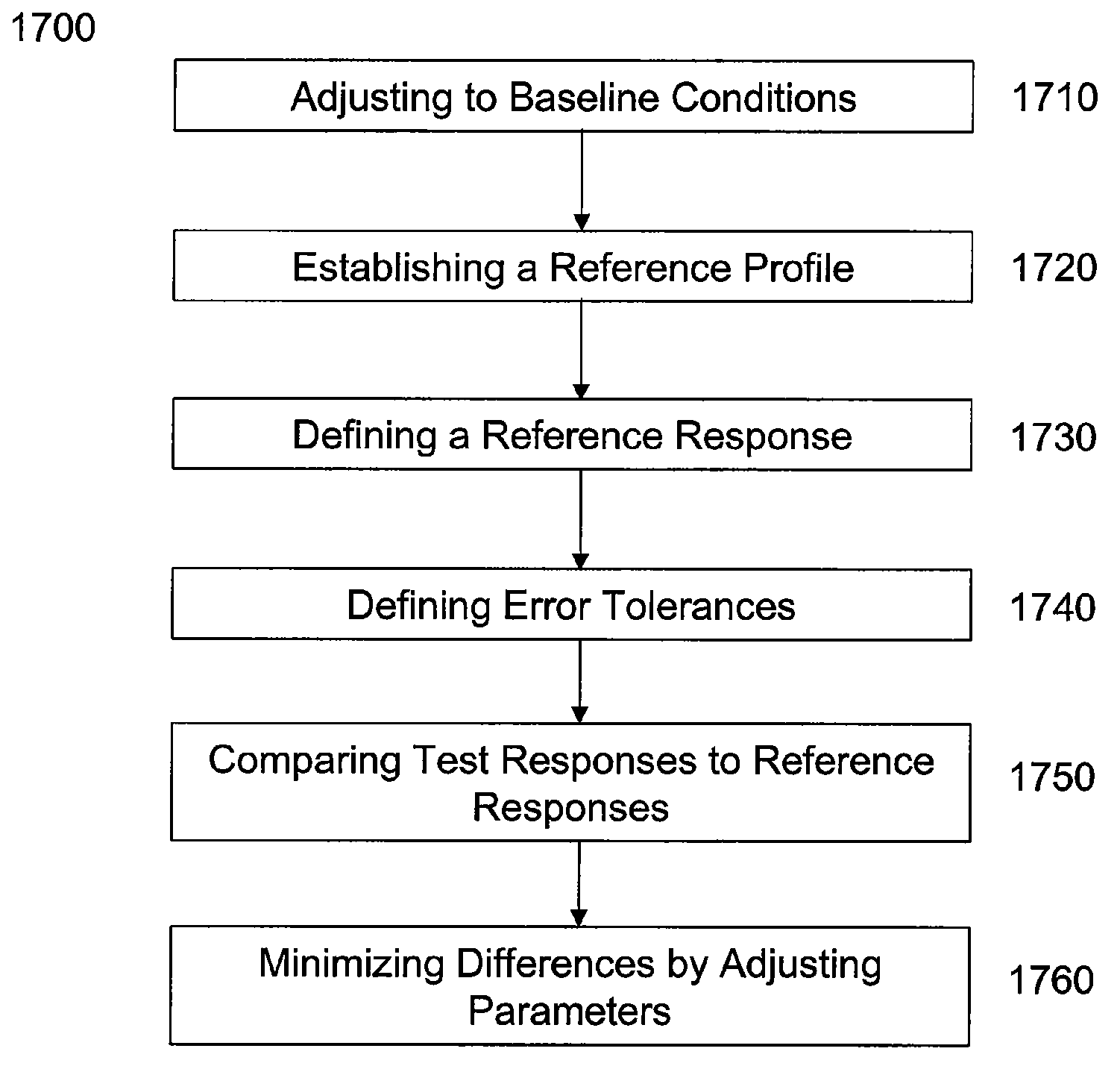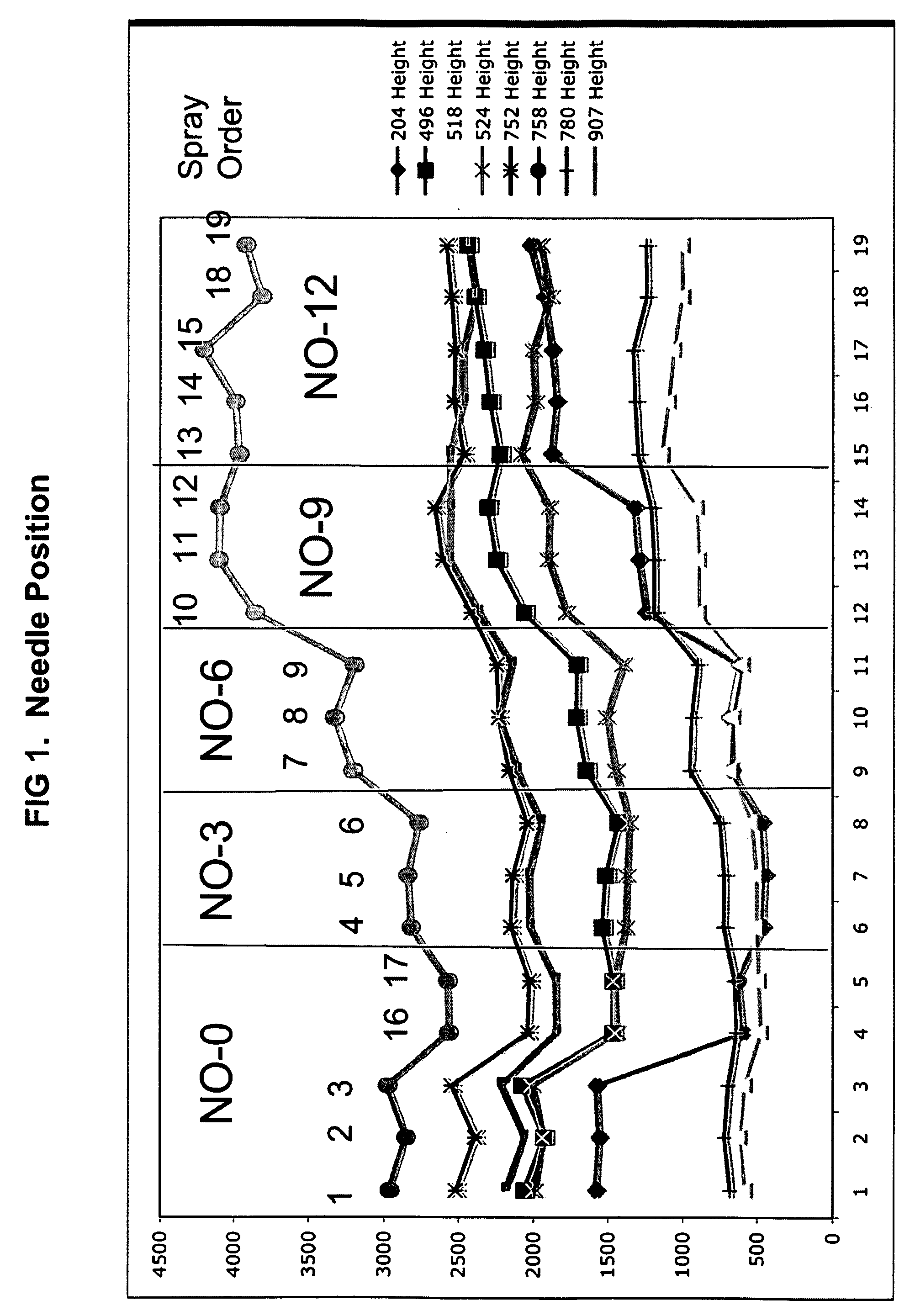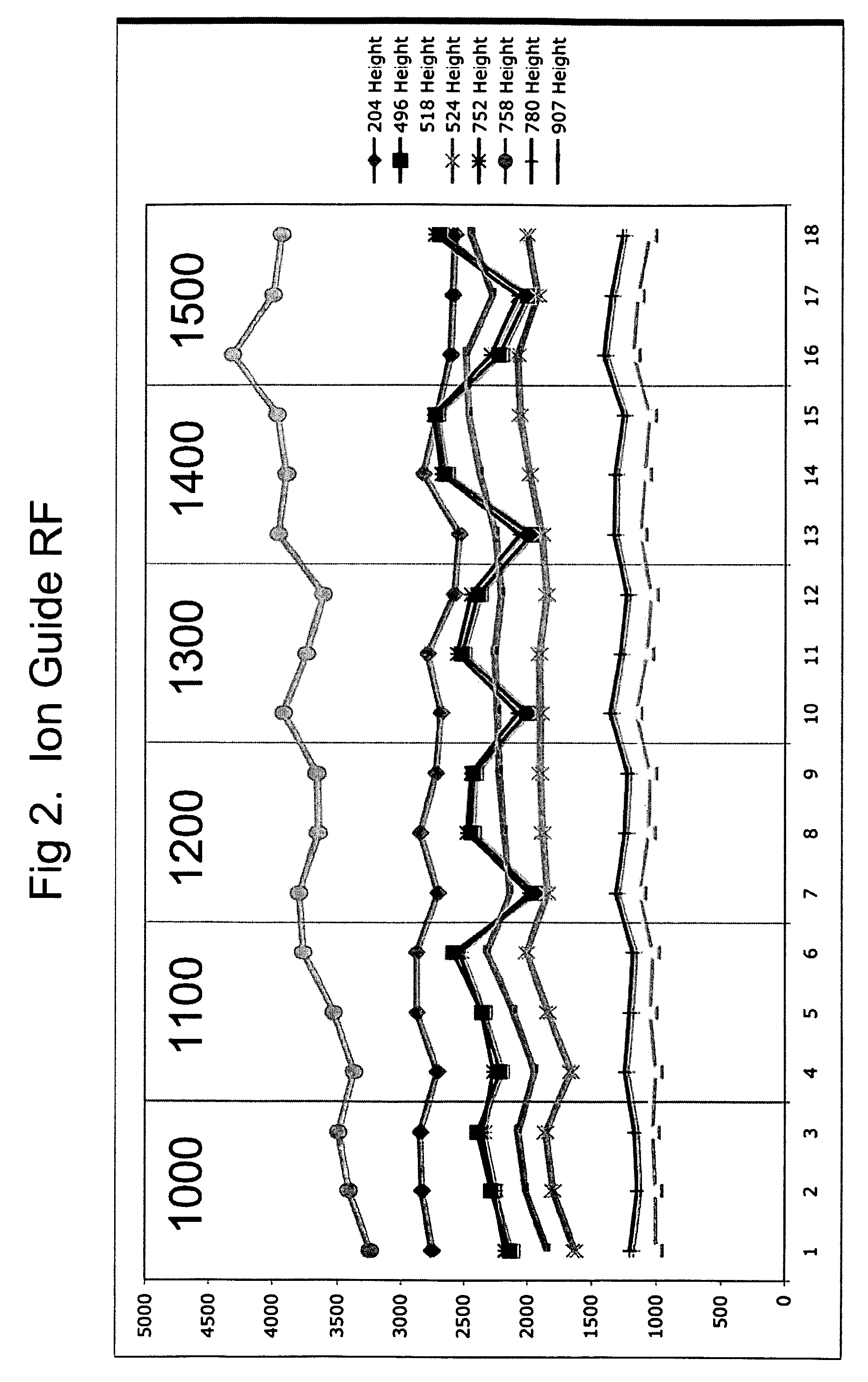Method for Calibrating an Analytical Instrument
a technology for calibrating and tuning analytical instruments, applied in the direction of instruments, tube calibration apparatus, material analysis, etc., can solve the problem of inadequate re-tuning, etc., and achieve the effect of minimizing differences
- Summary
- Abstract
- Description
- Claims
- Application Information
AI Technical Summary
Benefits of technology
Problems solved by technology
Method used
Image
Examples
example 1
Needle Position Adjustments
[0074]The height of the needle in an AccuTOF mass spectrometer was changed in step-wise manner by turning the needle height knob. As shown in FIG. 1, different positions of the needle resulted in changes in the height (intensity) of various peaks found at the indicated m / z values. In performing this experiment, NO-0 is a setting as low as the needle can go, NO-3 is 3 complete turns of the adjustment, NO-6 is 6 complete turns up from NO-0, NO-9 is 9 complete turns up from NO-0 and NO-12 is 12 complete turns up from NO-0—position. Three analyses of sample were made at each needle position; two repeat analyses were made at each of positions NO-0 and NO-12. We believe that analyses 16 and 17 (at setting NO-0) may have been set improperly or may reflect a time delay artifact. It was determined that the setting NO-12 might be the most internally reproducible setting for the needle height and also note that by adjusting the needle height, the signal intensity can...
example 2
Peaks Voltage Setting
[0075]The RF Guide Voltage of the AccuTOF was adjusted in a stepwise manner at 100-volt increments through the range of 1,000 volts to 1,500 voltages. As shown in FIG. 2, for all analyses, the peak height, i.e., intensity remained fairly constant except for a possible periodicity seen for m / z values of 752 and 496. Decreasing Peaks voltage may have the effect of decreasing intensity somewhat for some m / z values.
example 3
Orifice 1 Voltage Adjustments
[0076]The Orifice 1 Voltage of the AccuTOF was adjusted in a stepwise manner at 5-volt increments through the range of 30 to 65 volts. This plot represents a spray sequence of a standard mixture of compounds. As shown in FIG. 3, intensity for some peaks tended to increase across this voltage range, to decrease for others and to hold fairly constant for some test compounds.
PUM
 Login to View More
Login to View More Abstract
Description
Claims
Application Information
 Login to View More
Login to View More - R&D
- Intellectual Property
- Life Sciences
- Materials
- Tech Scout
- Unparalleled Data Quality
- Higher Quality Content
- 60% Fewer Hallucinations
Browse by: Latest US Patents, China's latest patents, Technical Efficacy Thesaurus, Application Domain, Technology Topic, Popular Technical Reports.
© 2025 PatSnap. All rights reserved.Legal|Privacy policy|Modern Slavery Act Transparency Statement|Sitemap|About US| Contact US: help@patsnap.com



